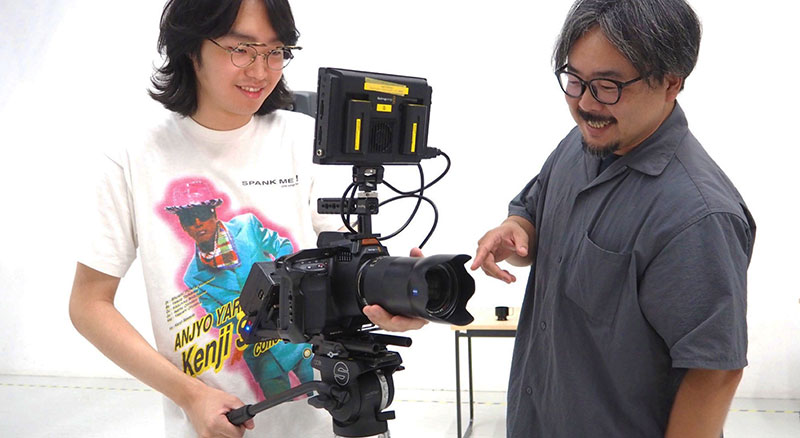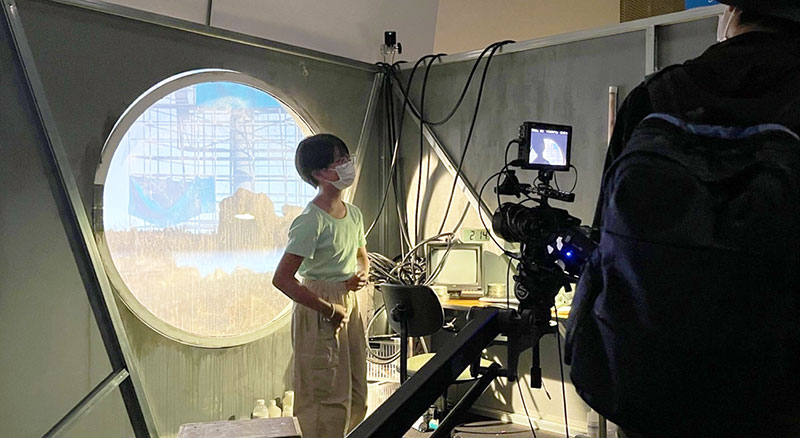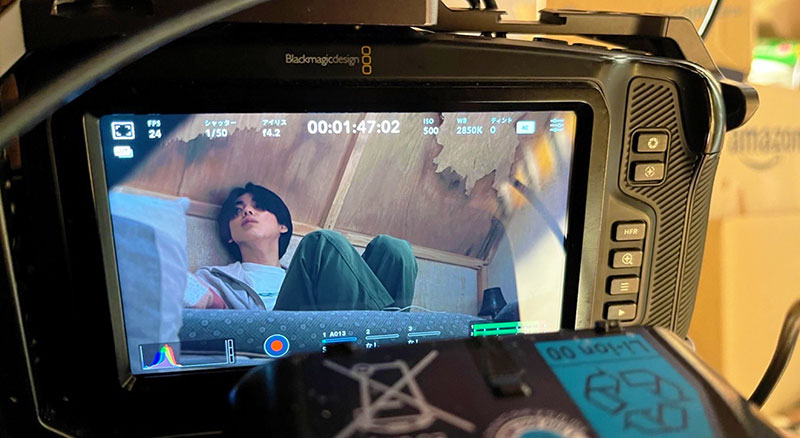Musashino Art University uses Blackmagic Pocket Cinema Camera 6K Pro, DaVinci Resolve Studio post software and Blackmagic Cloud in its collaborative video production workflows.

Musashino Art University is one of Japan’s top art universities, known for having nurtured notable artists, and other individuals who are prominent in Japan’s arts community, as students. Hiroshi Oka teaches the drama production class at the university. “I’ve been teaching at this university for about eight years,” he said. “In our drama production class, a full scale set is built in a studio. The students are divided into groups. Each group is assigned a role and all groups work together to create a film.
“Back at the time I started, we were using DSLR cameras for shooting video. Because I wanted the students to learn filmmaking through the same experiences they would have in an actual filmmaking environment, I decided to introduce a cinema camera to the class. I suggested the Pocket Cinema Cameras, since they are easy even for students to use.”
Consequently, Blackmagic Design cameras and other equipment are being used for educational purposes within the university’s film department.
Professional Workflows
Daisuke Tamochi, one of the department’s teaching assistants, said, “We have three Pocket Cinema 6K cameras. When the Pocket 6K Pro was released, we added five more to ensure more students had access to them. We also have three Video Assist 7in 12G HDR units. For classes that require live streaming or open campus events, we use the ATEM Mini Pro ISO. DaVinci Resolve and Blackmagic Cloud are integrated into our teaching as well.”

Tamochi said, “Apart from class work, students can borrow equipment for their independent projects. We’ve noticed that the Pocket Cinema Camera is used quite frequently for these projects. Blackmagic cameras are compact and mobile, making them suitable for individuals or small group shooting. The cameras have large, easy to use screens on the back, avoiding the need for external monitors and keeping the equipment required for shooting fairly simple.”
Cloud Options
The group work undertaken in Oka’s class involves DaVinci Resolve Studio and Blackmagic Cloud as well. He noted, “When Blackmagic Cloud was released, I used the service for the vertical video drama production I was involved in at the time,” he said. “This was a project in which one of my students and I served as co-directors. We had a tight schedule with a weekly stream, so we used Blackmagic Cloud to share the project and edit each part separately, combining them afterwards. It worked well, which led me to consider this workflow for integration into my class. We started using it in April of this year.”
In the class, students were divided into five groups and, as described above, worked together to create a single project. Each team creates a project library and collaboratively conducts editing. Oka commented, “It’s a great opportunity for many students to get involved in the editing process. They can quickly show their edits to others and have discussions, ultimately improving the work.
“DaVinci Resolve allows us to work on colour grading and audio simultaneously without the restriction of locking the picture, which saves a lot of time. We also used Fairlight for audio editing. When compared to our previous tools, it can do almost everything. Efficiency increased significantly because we could switch between audio and video editing so quickly.”
Oka uses Blackmagic Cloud in various professional collaborations outside of class. He finds that people who were skeptical about cloud based workflows due to their prior experience with other editing software have been pleased with the speed at which edits can be shared when they use Blackmagic Cloud.

Presentations
The Presentations feature, currently in public beta, is also an effective communication tool for his collaborations. Accessible through the user’s Blackmagic Cloud ID, it generates feedback on your work in progress without relying on VPNs or risking shipping files. Users can publish a timeline or clip directly from DaVinci Resolve into Presentations, or manually upload and then authorize a list of Blackmagic IDs to be allowed access to review.
Presentations that have been uploaded can be reviewed at any time, also within a video conference or chat window. Shared markers and comments are automatically and bidirectionally relinked with DaVinci Resolve.
Oka said, “We can receive client feedback and make immediate revisions, allowing us to discuss changes during video chats, and making the editing process more efficient.” www.blackmagicdesign.com




